Tennis
WTA: The 12 most memorable moments at the Porsche Tennis Grand Prix
From Steffi Graf to Laura Siegemund, from Filderstadt to Stuttgart: We present you twelve legendary stories of Germany’s biggest women’s tournament, which is celebrating its 41st edition this year.
It is a story that would probably no longer exist today. Tennis fan Dieter Fischer, owner of a drugstore, had a tennis gala held in a hall in Filderstadt in 1977. The beginning of a success story: From 1978 the Porsche Tennis Grand Prix takes place, the money for the rights to the tournament is initially paid out of Fischer’s own pocket. In 1979 Billie Jean King, Martina Navratilova, Chris Evert and Tracy Austin came to Filderstadt. “Schmetterball in the Province,” headlines the 1980 issue, “You just have to talk to the girls,” says Fischer. And that’s what he does: Legendary and often quoted: the famous bedtime pillow that Fischer always puts on his players’ pillows, from perfume to cuddly toys. In 2002 Fischer gave up his role as organiser and Porsche takes over, after being the main sponsor and always offering the winner a dream car as a prize (and on the pitch) – until today.
For the start of the tournament we have compiled ten special stories from Filderstadt and Stuttgart for you.
The American is synonymous with the “prodigies” in women’s tennis. Tracy Austin is only 15 years old when she won the first round in Filderstadt – 6:3, 6:3 in the final against Betty Stöve from the Netherlands. Austin also triumphs in 1979, 1980 and 1981, including twice the final against Martina Navratilova. No other player then manages four victories in a row. In 1979, Wojtek Fibak wins the first and only men’s tournament against Guillermo Vilas and takes home a Porsche 928, which is auctioned by ATP in the following year.
It’s a memorable moment – without a happy ending. In 1982, 13-year-old Steffi Graf played her first tournament and lost 4-6, 0-6 to Tracy Austin in round one. In America there are hundreds of young girls of Graf’s playing strength, Austin reports at the subsequent press conference. Unfortunately, one does not experience the great time of Steffi Graf in Filderstadt. Fräulein Vorhand” comes to the Schwabenländle only three more times. She lost to Jo Durie in round two in 1983, to Catarina Lindqvist in the final in 1984 and to Pam Shriver in the semi-finals in 1985. Here it comes to a quarrel: Graf, allegedly provoked by Shriver, thugs her bat and turns the audience against him. “She’ll never play in Filderstadt again,” says Father Peter, who was noticed during the tournament for unauthorized coaching. In 1999, however, she almost makes a comeback: Graf plans to play in Filderstadt, but ends her career a few weeks earlier.
Filderstadt is also one of the favourite tournaments of the “grande dame” of tennis: Martina Navratilova replaces Tracy Austin as the permanent winner in 1982, and as befits her rank in the final. Navratilova has more to laugh about: In 1986 she took her 1000th individual victory on the tour in Filderstadt and celebrated her 30th birthday on October 18 of the same year, when the audience sang her a song. For Tracy Austin, this is her last appearance in Filderstadt: she announced her resignation when she was only 20 years old and burned out in 1983. Her comeback attempts in the early 90s fail. Among other things, she cashed “the glasses” against Steffi Graf in Indian Wells in 1994: a 0:6, 0:6.
It is the beginning of a great love story: Anke Huber makes it into the final against Martina Navratilova. After more than three hours of play Huber wins 2:6, 6:2, 7:6 (4). The stupid thing about it: Huber opts for the latter offer when asked “money or Porsche”, but is only 16 and is not yet allowed to drive it. This changes three years later, when she wins against Mary Pierce and gets to mount her Porsche 911 Carrera 4 Cabriolet. Huber’s love affair with Filderstadt changes into a business relationship at the end of his career: She has been the sporting director of the tournament since 2002. A nice side effect: Huber is now allowed to drive the winning cars onto the court without any problems on final Sunday.
After victories against Arantxa Sanchez Vicario, Lindsay Davenport and Anke Huber, Martina Hingis wins her first of 43 individual titles on the professional tour – and her first of four titles in Filderstadt. Hingis also has a well-known problem: She has just turned 16 and is not allowed to drive a car, especially not a Porsche. This changed in 1999 when she won her third Porsche in the final. Steffi Graf also comes full circle: She sits in the box as guest of honour at the finale and is celebrated by the 3,500 spectators with minutes of applause.
Goodbye contemplation, but conservation of value and progress: 2006 is the end in Filderstadt and the Porsche Tennis Grand Prix celebrates its premiere in Stuttgart. It should be bigger and more comfortable. Without the move, according to tournament director Markus Günthardt, the tournament would no longer exist. “The WTA wouldn’t have gone along with that.” Nevertheless, they manage to “maintain the values that Filderstadt has built up over many years, but at the same time take courageous steps forward”. The first winner in October 2006 is Nadia Petrova, who won the final against Tatiana Golovin 6:3, 7:6 (4).
Three years after the Stuttgart premiere there is a problem. The WTA wants to go to Asia in autumn rather than to Stuttgart, a postponement into spring is the consequence. Günthardt and Co. do not want to lose the world elite, but with an indoor event in April? The idea: Stuttgart on sand, as preparation for the French Open in May. Günthardt has three major construction sites: “Can we get the conditions right? Will the players remain loyal to us? Do the crowd join in?” The answers: yes, yes and yes. First Sand Queen becomes Svetlana Kuznetsova. A nice side effect of the April edition: the simultaneous Cannstatter Wasen, where the players like to ride a roller coaster and eat cotton candy.
“Julia Görges wins the Porsche Tennis Grand Prix 2011, and rightly so”, Eurosport commentator Matthias Stach rejoices after Görges has hammered her last serve into the field of world number one Caroline Wozniacki. The 7:6 (3), 6:3 victory of the Bad Oldesloerin delivers three things at once: the first German winner in Stuttgart, the first since Anke Huber at the Porsche Tennis Grand Prix and one of the most beautiful sports photos of the year. “Match point gave me goose bumps. It was an incredibly great feeling to play in front of so many people in the final,” Görges said afterwards. Tournament director Günthardt is pleased about his unexpected luck: “In the era after Graf and Huber we dreamed of a German winner. Suddenly she was there.”
She made it from the self-proclaimed cow on ice to the most successful clay court player of recent years: Maria Sharapova set out after her first victory in Stuttgart in 2012 to win the French Open and complete her career grand slam. Sharapova also won the Porsche Arena in 2013 and 2014. And will survive the most exciting first-round game in Stuttgart history in 2014: 7:6 (5), 6:7 (5), 7:6 (2) after 3 hours 23 minutes against Lucie Safarova; Sharapova is already leading 5:1 in the third set. In the final the new sand court queen wins her third Porsche against Ana Ivanovic and weeks later against Simona Halep her second French Open title.
Once again Caroline Wozniacki is the one to suffer. She is in the final again and will meet a local opponent: Angelique Kerber. And in front of 4,5000 spectators, the Dane again only has a look at her exterior mirrors. Porsche brand ambassador Kerber won 3:6, 6:1, 7:5 with an “insane appearance” (Barbara Rittner) and despite a 1:3 and 3:5 deficit in set three. Kerber celebrates her fifth tournament victory overall and “the finest victory of my career”.
Angelique Kerber comes as defending champion and Australian Open winner and Laura Siegemund plays the tournament of a lifetime – everything fits at the Porsche Tennis Grand Prix 2016. Siegemund is the history of the tournament, the Filderstadt player, who had actually already finished with professional tennis, defeated three top ten players at once: Simona Halep, Roberta Vinci and Agnieszka Radwanska, and impressed with stops, praises, angle balls and net attacks. The tank is then empty against Kerber in the final.
The press area is more crowded than ever, even the British Sun has gone to Stuttgart. Why? Maria Sharapova celebrates her comeback after her doping ban, just for the first training in the hall on Wednesday morning the cameras are hot. Sharapova reaches the semi-finals – but the tournament player is again Laura Siegemund: 29-year-old Svetlana Kuznetsova, Karolina Pliskova and Simona Halep beat Kristina Mladenovic 6-1, 6-2, 7-6 (5) in the heartbeat final to win her biggest title!


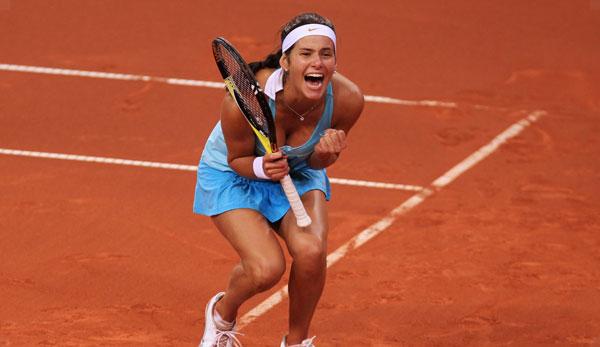


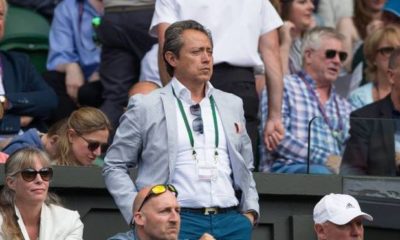

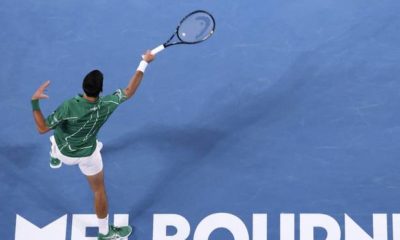

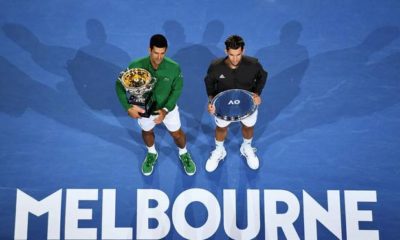

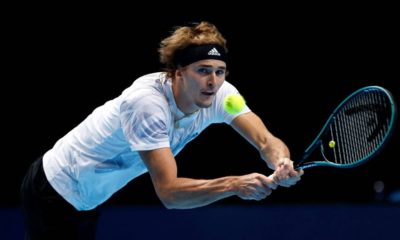

You must be logged in to post a comment Login